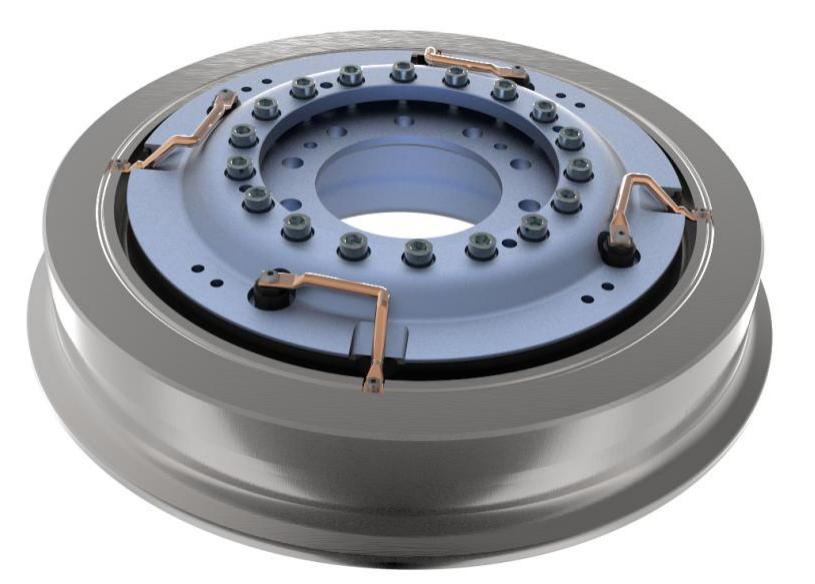

Overview:
Resilient wheel refers to a kind of Split type wheels, generally composed of wheel rims, wheel core, and rubber elastomer etc. Compared with traditional steel wheel, it has significantly advantage of vibration and noise, and was widely used in low floor trams and subway vehicles.
Structure and the Function:
1&2. Wheel core was connected to the axle and Rim was connected to the wheel-rail respectively, designed according to the interface dimension.
3. Rubber elastomer provides the deflection capacity and stiffness and connect wheel core and rim. It can be divided into three type: compression type, shear type and compression shear type.
4. Ground lead connect with compression ring and rim and transfer the current.
5. Bolt is used to achieve the connection limit and individual fastening function.
6. Compression ring is used to fix the rubber elastomer through interference fit.
Main Characteristic:
Resilient wheel can effectively reduce curve noise, track impact and reduce wheel-rail wear and improve the service life of line vehicles.
· Maintenance-free
· Noise reduction above 5dB
· Operating speed can reach 80km/h
· Life span can reach 6 years
· -50℃~50℃ Wide temperature range -50℃~50℃
Capabilities:
· Autonomous and customized design according to customer’s requirements: load and performance analysis, structural and formula design;
· Advanced production and manufacturing, quality management, and after-sales service;
· Authoritative certification and testing: dynamic and static performance test, fatigue and creep test, slip torque test, FEA analysis and acoustic vibration analysis.
Typical Resilient Wheel and Elastomer:
More Details:

